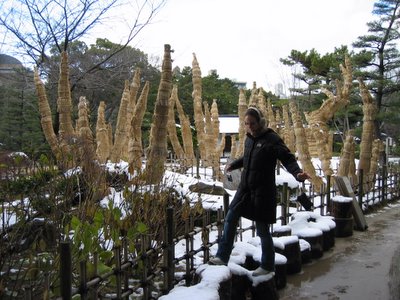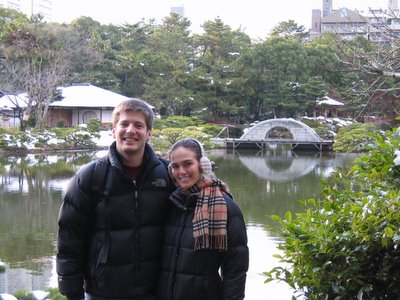Seoul
View of Seoul from the peak of Namsan:

Buddhists leave winter solstice services at Jogyesa, Seoul's largest temple:

One of dozens of structures at Changdeokgung, a World Heritage palace constructed in the first decade of the 15th century. Seoul's center of power in the 17th, 18th, and 19th centuries:

Gyeongbokgung, the 15th and 16th century center of power until it was destroyed in the 1592 Japanese invasions. It was subsequently destroyed in the early 20th century by the Japanese colonial authority, but rebuilt after the war.

Roof detail depicting the mythological seven evolutionary stages of humanity:

Interior detail of a Gyeongbokgung building:

Statue of King Sejong the Great, inventor of the phonetic hangeul alphabet in 1443. Strangely, hanguel wasn't adopted by the state until 1945. Kim Il-Sung substituted the 24 letters for Chinese characters, bringing literacy to uneducated industrial laborers in the DPRK; the US-installed ROK dictator Syngman Rhee followed suit shortly after.

View of the city across the Hangang River:




















